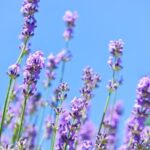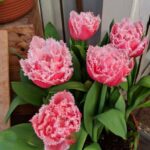No maintenance landscaping ideas are becoming increasingly popular as homeowners seek to minimize the time and effort required to upkeep their outdoor spaces. In this article, we will explore various strategies and techniques for creating a low-maintenance landscape that still looks beautiful and inviting. From choosing the right plants to utilizing hardscaping and xeriscaping, there are numerous ways to design a landscape that requires minimal care and attention.
The concept of no maintenance landscaping revolves around the idea of reducing the need for regular upkeep, such as watering, mowing, and pruning. By incorporating low-maintenance elements into your landscape design, you can save time and resources while still enjoying a stunning outdoor environment. Whether you have a small backyard or a spacious garden, there are plenty of options available for creating a low-maintenance landscape that suits your lifestyle and preferences.
Throughout this article, we will delve into various aspects of no maintenance landscaping, including low-maintenance plant options, drought-tolerant landscaping, synthetic turf and artificial grass, hardscaping techniques, garden design tips, and eco-friendly landscaping practices. By implementing these ideas, you can transform your outdoor space into a low-maintenance oasis that requires minimal effort to maintain.
Low-Maintenance Plant Options
When it comes to creating a low-maintenance landscape, choosing the right plants is essential. Incorporating low-maintenance plant options into your garden not only reduces the need for regular care and upkeep but also adds beauty and greenery to your outdoor space. Here are some plant options that require minimal care and can thrive in various environmental conditions.
Perennials
One of the best choices for low-maintenance landscapes is perennials. These plants come back year after year without much intervention and are available in a wide range of colors, shapes, and sizes. Some popular low-maintenance perennial options include lavender, black-eyed Susans, Russian sage, and daylilies. These plants are relatively drought-tolerant once established and require very little maintenance.
Shrubs
Shrubs are another great addition to a low-maintenance landscape. When choosing shrubs, opt for varieties that are known for their hardiness and resistance to pests and diseases. Some examples of low-maintenance shrubs include boxwood, barberry, juniper, and potentilla. Once established, these shrubs typically require minimal pruning and watering.
Native Plants
Incorporating native plants into your landscape is not only environmentally friendly but also ensures that the flora will thrive with little to no maintenance. Native plants are well-suited to the local climate and soil conditions, requiring minimal water and care once they have adapted to their surroundings. Consider native options such as butterfly weed, prairie dropseed grass, coneflowers, or wild columbine for a low-maintenance garden that supports local ecosystems.
By selecting these low-maintenance plant options for your landscape design, you can create a beautiful outdoor space that requires minimal care and upkeep while still enjoying lush greenery and vibrant blooms throughout the year. No maintenance landscaping ideas can include incorporating these resilient plants into your yard to create a beautiful yet easy-to-manage garden or outdoor space.
Drought-Tolerant Landscaping
When choosing plants for a drought-tolerant landscape, consider options such as succulents, cacti, lavender, and ornamental grasses. These plants are well-suited to arid climates and require little water once established. In addition to their water-saving benefits, drought-resistant plants come in a variety of colors, shapes, and textures, allowing you to create a visually appealing landscape without the need for constant maintenance.
Incorporating drip irrigation systems or soaker hoses can also help ensure that your drought-tolerant plants receive the water they need while minimizing water waste. These systems deliver water directly to the root zone of the plants, reducing evaporation and runoff.
Mulching your garden beds can also help retain moisture in the soil, further reducing the need for frequent watering. By utilizing these methods and selecting the right plant varieties, you can create a beautiful low-maintenance landscape that thrives even in dry conditions.
- Using succulents
- Selecting ornamental grasses
- Incorporating drip irrigation or soaker hoses
- Mulching garden beds
Synthetic Turf and Artificial Grass
When it comes to creating a low-maintenance landscape, synthetic turf and artificial grass are excellent options for eliminating the need for regular lawn care. These alternatives to natural grass offer several benefits, including minimal maintenance requirements, reduced water usage, and year-round greenery.
Artificial grass is made from synthetic fibers designed to mimic the look and feel of real grass, while synthetic turf is a more durable option commonly used in sports fields and playgrounds. Both choices provide an attractive, hassle-free solution for homeowners looking to reduce their landscaping responsibilities.
One of the primary advantages of synthetic turf and artificial grass is their ability to withstand various weather conditions without requiring extensive upkeep. With no mowing, watering, or fertilizing necessary, these options provide a consistently lush appearance throughout the year with minimal effort on the homeowner’s part. Additionally, since artificial grass does not require watering, it helps conserve water resources, making it an eco-friendly choice for those seeking sustainable landscaping solutions.
Incorporating synthetic turf or artificial grass into a landscape design can also contribute to lower maintenance costs over time. While there may be an initial investment involved in installing these alternatives, they can ultimately lead to long-term savings by eliminating the need for ongoing lawn care activities.
Furthermore, their durability means that they can withstand heavy foot traffic and remain visually appealing without significant maintenance. With various styles and textures available, homeowners can choose an option that best complements their outdoor aesthetic while enjoying the benefit of minimal upkeep.
| Advantages | Benefits |
|---|---|
| Minimal maintenance requirements | Eliminates the need for mowing, watering, or fertilizing |
| Reduced water usage | Conserves water resources as no watering is needed |
| Long-term cost savings | Durable and withstands heavy foot traffic with minimal upkeep costs |
Hardscaping and Xeriscaping
What Is Hardscaping?
Hardscaping refers to the use of hard materials in landscaping, such as stone, wood, and concrete, to create functional and visually appealing outdoor spaces. These features can include patios, walkways, retaining walls, and other structures that add structure and utility to a landscape. The benefit of hardscaping in a low-maintenance landscape is that it requires minimal care and upkeep compared to traditional grassy areas or flower beds.
Xeriscaping Techniques for Water Conservation
Xeriscaping is a landscaping technique that focuses on water conservation by using drought-tolerant plants and efficient irrigation methods. By incorporating xeriscaping techniques into your hardscape design, you can greatly reduce the need for regular watering and maintenance. This can be achieved through the use of gravel or mulch in place of grass, grouping plants with similar watering needs together, and utilizing drip irrigation systems to deliver water directly to plant roots.
Creating an Inviting Outdoor Space
When implementing hardscape features and xeriscaping techniques in your landscape design, it’s important to consider how these elements can contribute to creating an inviting outdoor space. By carefully selecting materials, adding seating areas or fire pits, and incorporating colorful drought-resistant plants, you can achieve a low-maintenance landscape that also provides aesthetic appeal and functionality.
Additionally, the use of hardscaping and xeriscaping can increase the overall value of your property while reducing the time and effort required for upkeep. By combining these elements with other low-maintenance landscaping ideas, you can create a sustainable and visually pleasing outdoor environment without the need for extensive maintenance.
Low-Maintenance Garden Design
When it comes to creating a low-maintenance garden, there are several key tips and ideas to keep in mind. One of the best ways to minimize the need for upkeep is to incorporate a variety of native plants into your garden.
Native plants are well-suited to the local climate and soil conditions, which means they require less water, fertilizer, and overall care. Consider consulting with a local nursery or landscaping professional to determine the best native plant options for your specific area.
In addition to selecting low-maintenance plants, you can also design your garden in a way that reduces the need for regular upkeep. For example, creating defined plant beds with mulch or gravel borders can help to minimize weed growth and keep the garden looking neat and tidy with minimal effort. Incorporating hardscape features such as paths, patios, and raised beds can also help to reduce the overall maintenance required for your garden.
Another important aspect of low-maintenance garden design is proper planning and organization. By grouping plants with similar maintenance needs together, you can create distinct zones within your garden that make it easier to care for each type of plant.
This approach not only reduces maintenance time but also ensures that each plant receives the specific care it requires. With these tips and ideas in mind, you can create a beautiful low-maintenance garden that enhances your outdoor space without requiring constant attention.
Overall, creating a low-maintenance garden is about thoughtful planning and strategic design. By choosing the right plants, incorporating hardscape features, and organizing your garden effectively, you can enjoy a beautiful outdoor space with minimal effort. Keep these tips in mind as you plan and design your low-maintenance garden to achieve a landscape that looks great while requiring little ongoing maintenance.
Easy Maintenance Landscaping Tools and Equipment
When it comes to creating a low-maintenance landscape, using the right tools and equipment can make a significant difference. By investing in the proper tools, homeowners can simplify the upkeep of their outdoor spaces while minimizing the time and effort required for maintenance. Here are some essential tools and equipment that can help achieve a no maintenance landscaping idea:
Drip Irrigation System
Installing a drip irrigation system is an excellent way to efficiently water your landscape without the need for constant supervision. This system delivers water directly to the roots of plants, reducing water waste and promoting healthier growth. With programmable timers, homeowners can set specific watering schedules, ensuring that plants receive adequate moisture without manual intervention.
Mulching Equipment
Mulch plays a crucial role in low-maintenance landscaping by preventing weed growth, retaining soil moisture, and regulating soil temperature. Investing in mulching equipment such as a wheelbarrow, rake, and pitchfork can simplify the process of spreading mulch throughout the landscape. Additionally, utilizing organic mulch materials like wood chips or straw can contribute to soil health over time.
Electric Trimmer or Edger
Maintaining clean edges along walkways, driveways, and garden beds can instantly enhance the appearance of a low-maintenance landscape. An electric trimmer or edger provides a precise and efficient way to keep grass and weeds from encroaching on hardscape features. Moreover, electric trimmers are environmentally friendly compared to gas-powered alternatives.
By incorporating these tools and equipment into your landscaping routine, you can effectively simplify maintenance tasks while achieving an aesthetically pleasing outdoor space. It’s important to select tools that align with your specific landscape design and maintenance needs to ensure optimal results for your no maintenance landscaping ideas.
Tips for Sustainable and Eco-Friendly Landscaping
In conclusion, creating a no maintenance landscaping doesn’t mean sacrificing beauty or environmental responsibility. By incorporating low-maintenance plant options, drought-tolerant landscaping, synthetic turf and artificial grass, hardscaping and xeriscaping techniques, and easy maintenance garden design, homeowners can enjoy a stunning landscape without the hassle of constant upkeep. Additionally, using eco-friendly and sustainable practices in landscaping can further enhance the overall appeal and benefits of a low-maintenance landscape.
With the use of sustainable materials and water-efficient plants, homeowners can reduce their environmental impact while enjoying the convenience of a low-maintenance landscape. Incorporating native plants that require minimal water and care not only saves time but also supports local ecosystems. Additionally, the use of hardscape features such as stone pathways or gravel beds reduces the need for water-intensive lawn areas while adding visual interest to the landscape.
Furthermore, by choosing to implement no maintenance landscaping ideas that are both environmentally friendly and sustainable, homeowners can take pride in knowing that their outdoor space is contributing positively to the environment. With careful planning and design considerations, it is possible to create a beautiful and eco-conscious landscape that requires minimal maintenance, providing a peaceful retreat for relaxation and enjoyment.
Frequently Asked Questions
What Is the Easiest Landscaping to Maintain?
The easiest landscaping to maintain typically includes incorporating low-maintenance plants such as evergreen shrubs, perennials, and ground covers. Using mulch and rock in place of high-maintenance grass can also reduce the need for regular watering and mowing.
How Do I Make My Back Yard Maintenance Free?
Making your back yard maintenance free involves minimizing the use of traditional lawn grass by opting for artificial turf or other ground cover options that require little to no mowing or watering. Additionally, using potted plants or raised garden beds can make it easier to control weeds and keep the backyard looking tidy with minimal effort.
What Is the Lowest Maintenance Garden?
The lowest maintenance garden usually consists of native plants that are well-suited to the local climate and soil conditions, reducing the need for excessive watering, fertilizing, and pest control. Installing a drip irrigation system and using mulch can also help conserve water and prevent weed growth without requiring constant attention from the gardener.

Welcome to my gardening blog! I am passionate about plants and enjoy sharing my knowledge and experiences with others. In this blog, I will write about everything related to gardening, from tips on how to get started to updates on my own garden projects.





